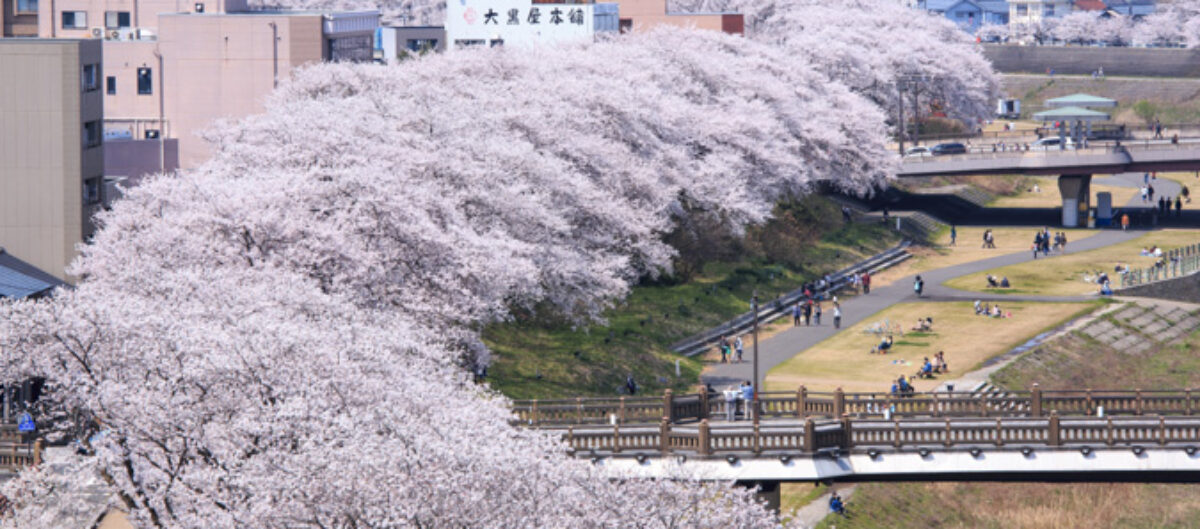

December/19/2020
The ginkgo, which is primarily known as a street tree, turns its leaves from green to yellow in autumn. It’s often called a living fossil because it’s one of the oldest tree species, and its existence can be traced back over 200 million years. It means that it coexisted with dinosaurs.

Hirase Sakugoro (1856-1925) was born in Fukui, Japan, worked as an illustrator in the botanical laboratory of the University of Tokyo, and later became a research associate. He defied the common wisdom by finding swimming sperm in the ginkgo in 1896 and surprised the world.

Why was this such a big discovery?
It was shown for the first time that a seed plant has swimming sperm.

Plants are divided into two main groups. The largest group is seed plants that produce seeds. The other is seedless plants that reproduce by spores, such as mosses and ferns. Seed plants are further divided into two groups: the gymnosperms and the angiosperms. The gymnosperms, including ginkgo and cycads, are flowerless plants. The angiosperms are flowering plants and the most numerous of all the divisions in the plant kingdom.
Before Hirase’s discovery, it was thought that evolutionarily primitive plants (seedless plants) had motile sperm, but it was believed that evolutionarily advanced plants (seed plants) didn’t.
However, Hirase’s discovery that the ginkgo has swimming sperm overturned common conceptions. Peter Del Tredici, a Harvard University botanist (plant researcher), said, “This was really momentous. The discovery of motile sperm captured people’s attention. From the scientific point of view, motile sperm was considered to be a trait associated with evolutionarily primitive, non-seed plants, such as mosses and ferns. And yet here was the ginkgo tree–clearly a seed-producing plant–with its motile sperm that linked non-seed plants to the more evolutionarily advanced conifers and angiosperms with pollen tubes and non-motile sperm. People realized, “My God! Ginkgo is a missing link–a living fossil.” (source: The Living Dinosaur by Jill Jonnes, Harvard Magazine)
What kind of person was Hirase?
He was quiet, humble, diligent and had a progressive spirit.
There’s one particular episode that shows Hirase’s character. After finding swimming ginkgo sperm, he started working at a school. He taught the students there, but he never talked to them about his big discovery. After finding out about Hirase’s discovery from other people, the students were very surprised and admired him for his modesty.
How did Hirase discover swimming ginkgo sperm?
1. He was a highly observant person.
2. A friend supported his research.


It’s difficult to observe swimming ginkgo sperm, but interestingly he’d previously studied art and had published some textbooks of drawing. His ability in artistic observation might be the reason why he discovered swimming ginkgo sperm.

Ikeno Seiichiro was a Japanese botanist (plant researcher) at the University of Tokyo. There was a good chemistry between Ikeno and Hirase, and they supported each other’s research. Ikeno assisted Hirase in writing papers in foreign languages, and Hirase produced sketches of plants for Ikeno. (At that time, cameras weren’t available, so illustrators drew pictures for academic papers.)
Surprisingly, Ikeno discovered swimming cycad sperm soon after Hirase’s discovery. (Cycads are also seed plants.)

In 1912, for the discoveries I mentioned, Hirase and Ikeno won the Imperial Prize of the Japan Academy, which was the highest academic award in Japan at that time. At first the award was supposedly only to be given to Ikeno. Hirase had almost no academic background, so he wasn’t included in the list, in spite of his great achievement. However, it’s said that Ikeno said if Hirase wasn’t awarded the prize, Ikeno wouldn’t accept his. (I think this illustrates the depth of their friendship.) Because of Ikeno’s protest, the award was given to both.
I was very surprised when I learned the following: the ginkgo and the cycad are the only living seed plants that have swimming sperm. (I’d thought that there were other seed plants with swimming sperm.)
Together, Hirase and Ikeno carved their names into history.
(References)
「HISTORY OF DISCOVERY OF SPERMATOZOIDS IN GINKGO BILOBA AND CYCAS REVOLUTA」(Y.Ogura)(PHYTOMORPHOLOGY, Vol 17, 109 – 114 (1967))
「The Living Dinosaur」(Jill Jonnes)(Harvard Maganize, November-December 2011)
「Scientific Contributions of Sakugoro Hirase」(Toshiyuki Nagata)(Ginkgo Biloba A Global Treasure pp 413-416)
「An evolutionary and cultural biography of ginkgo」(Peter R. Crane)(Plants People Planet.2019;1:32-37)
「平瀬作五郎伝」(小野勇)(生物科学 第35巻、第36巻、第37巻、第39巻)
「イチョウ精子発見の検証 平瀬作五郎の生涯」(本間健彦)(新泉社)
「精子発見とその意義」(加藤雅啓)(日本植物研究の歴史、小石川植物園300年の歩み)
「いまなぜイチョウ?」(長田敏行、堀輝三、ミヒャエル・ハップス、岩槻邦男)(現代書林)
「イチョウの自然誌と文化史」(長田敏行)(裳華房)
「イチョウ奇跡の2億年史」(著:ピーター・クレイン、訳:矢野真千子)(河出書房新社)
「イチョウの世界、植物の生き残り戦略」(生物の科学 遺伝)(2020 Vol.74, No.5)
「イチョウの大冒険―世界で一番古い木」(作:アラン・セール、絵:ザウ、訳:松島京子)(冨山房インターナショナル)
